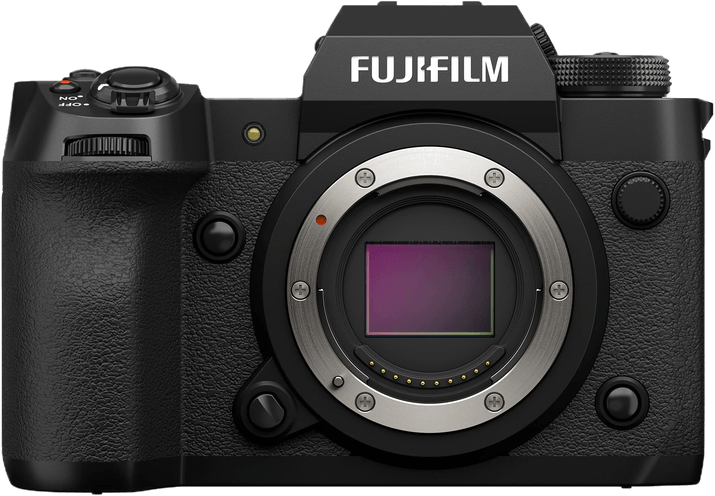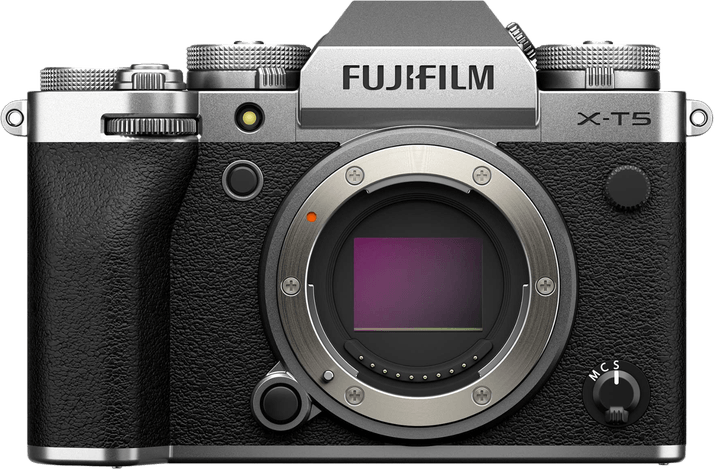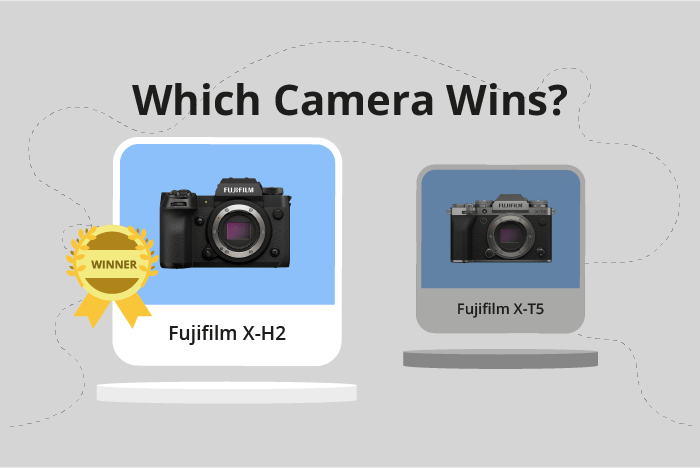Fujifilm X-H2 vs X-T5 Comparison
Fujifilm X-H2

Fujifilm X-T5

The Fujifilm X-H2 emerges as the winner with a score of 82/100, just one point ahead of the Fujifilm X-T5‘s score of 81/100. Both cameras are mirrorless and were released in 2022, with the X-H2 announced on May 31st and the X-T5 on February 11th. They share similarities in size, with the X-H2 measuring 136 x 93 x 95mm and the X-T5 at 130 x 91 x 64mm.
The X-H2 holds an edge over the X-T5 due to its higher score, which is reflected in its launch price of $1999, compared to the X-T5’s $1699. However, the X-T5 has an advantage in terms of weight, being lighter at 557g (1.23lbs) compared to the X-H2’s 660g (1.46lbs).
Taking these factors into account, the Fujifilm X-H2 comes out on top with its marginally higher score and more premium features, while the X-T5 offers a slightly more compact and lightweight option for those prioritizing portability.
Fujifilm X-H2 vs X-T5 Overview and Optics
The Fujifilm X-H2 and the Fujifilm X-T5 cameras both score 81/100 in optics, indicating that they are evenly matched in terms of optical performance. They share several key specifications, including 40-megapixel resolution, 15 fps shooting speed, CMOS sensor type, X-Processor 5, APS-C sensor size, Fujifilm X lens mount, and image stabilization. These common features provide a solid foundation for photographers, allowing for high-quality images and impressive performance.
Despite the equal score, the Fujifilm X-H2 has some advantages over the X-T5. One such advantage is its more robust build, which offers greater durability and weather resistance. This makes the X-H2 better suited for challenging shooting environments, ensuring that the camera can withstand harsh conditions and continue to perform well. Additionally, the X-H2 has a slightly larger viewfinder, providing a more comfortable and immersive shooting experience.
On the other hand, the Fujifilm X-T5 has the edge in terms of portability and weight. It is lighter and more compact than the X-H2, making it easier to carry around and use for extended periods without causing fatigue. This makes the X-T5 a more convenient option for photographers who value mobility and ease of use.
Taking these factors into consideration, both the Fujifilm X-H2 and the Fujifilm X-T5 offer excellent optical performance, with shared specifications that ensure high-quality images and impressive performance. The X-H2 is better suited for photographers who require a more durable and weather-resistant camera, while the X-T5 is ideal for those who prioritize portability and ease of use. Ultimately, the choice between these two cameras will depend on individual preferences and specific shooting requirements.
Fujifilm X-H2 vs X-T5 Video Performance
The Fujifilm X-H2 outperforms the X-T5 in video capabilities due to its maximum video resolution of 8K and frame rate of 360fps. This advantage makes the X-H2 more suitable for professional videographers and filmmakers seeking the highest possible video quality.
The X-T5 is a strong contender with its higher maximum video resolution of 6K and dimensions of 6240×4160, which provide excellent detail and clarity in video recordings. Bother offer built-in time-lapse functionality.
Fujifilm X-H2 vs X-T5 Features and Benefits
The Fujifilm X-H2 and Fujifilm X-T5 both have a feature score of 85 out of 100, indicating a tie in this comparison. These cameras share several specifications, such as a 3-inch screen size, touchscreen, flip screen, GPS, WIFI, and Bluetooth capabilities.
The Fujifilm X-H2 has a screen resolution of 1,620,000 dots. This camera provides users with a high-quality display screen for previewing images and navigating menus. The touchscreen and flip screen features also make it easy to capture photos from various angles and control the camera’s settings.
On the other hand, the Fujifilm X-T5 has a higher screen resolution of 1,840,000 dots, offering a slightly better image display quality compared to the X-H2. This camera also has the same touchscreen and flip screen capabilities, making it equally convenient for capturing images from different angles and adjusting settings.
While both cameras have impressive features, the Fujifilm X-T5 holds a slight edge over the X-H2 due to its higher screen resolution. However, this difference may not be significant for all users, as both cameras provide a high-quality display and user-friendly features. In this comparison, it is crucial to consider the specific needs and preferences of the user when choosing between the Fujifilm X-H2 and Fujifilm X-T5. Both cameras excel in their respective areas, and the choice ultimately depends on personal preference and requirements.
Fujifilm X-H2 vs X-T5 Storage and Battery
The Fujifilm X-H2 takes the lead in the storage and battery category with a score of 79/100, while the Fujifilm X-T5 follows closely with a score of 76/100. Both cameras share similarities in this category, including two memory card slots and compatibility with the NP-W235 battery type. Additionally, both cameras offer USB charging capabilities.
The X-H2 outperforms the X-T5 due to its support for faster CFexpress Type B and UHS-II compatible SD memory cards, providing quicker data transfer and storage. Furthermore, the X-H2 boasts a longer battery life, allowing for 680 shots compared to the X-T5’s 580 shots.
In contrast, the X-T5 only supports UHS-I compatible SD, SDHC, and SDXC memory cards, which are slower than the cards supported by the X-H2. However, the X-T5’s battery life is still respectable, offering 580 shots per charge.
Taking these factors into account, the Fujifilm X-H2 offers better storage and battery performance, making it the superior choice in this category. The X-T5, while slightly behind, remains a viable option with its decent battery life and memory card compatibility.
Alternatives to the Fujifilm X-H2 and X-T5
Are you still undecided about which camera is right for you? Have a look at these popular comparisons that feature the Fujifilm X-H2 or the Fujifilm X-T5:

